CONTENTS
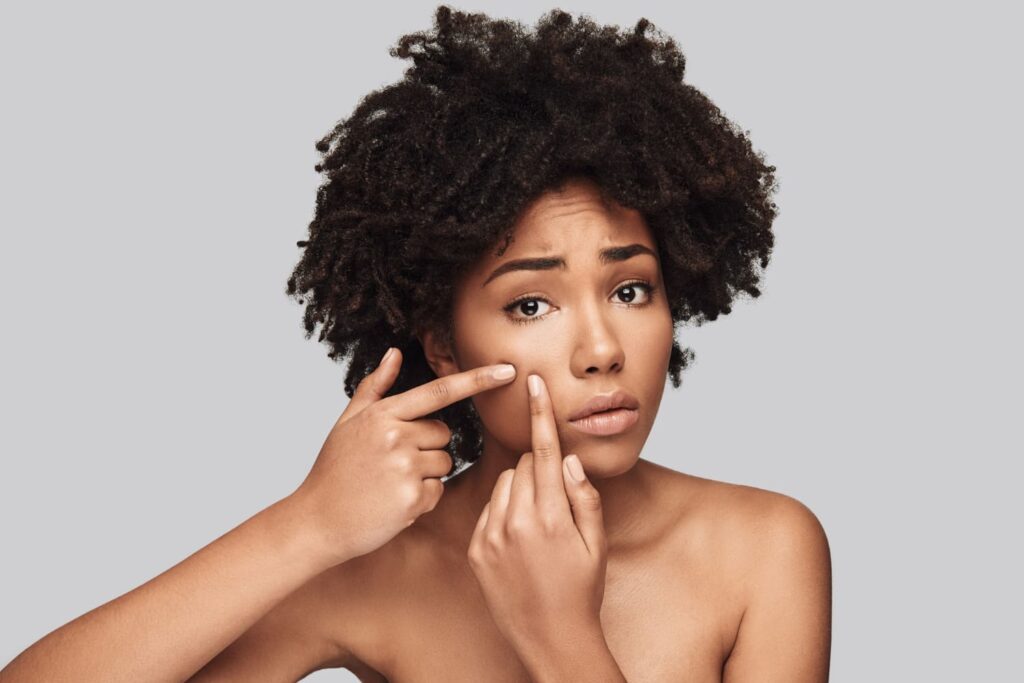
The Best Way to Pop a Pimple for a Blemish-Free Complexion
Having pimples are already complicated, let alone making them go away. Sometimes, the way you pop your pimples is wrong, resulting in skin blemishes.
Struggling with pesky pimples but don’t have time to head to the doctor? Don’t fret! Learn the right way to pop a pimple that’ll give you a blemish-free complexion in no time, without any pain or tears! We’ve got you covered with this simple guide on the best way to pop a pimple.
How to Pop a Pimple
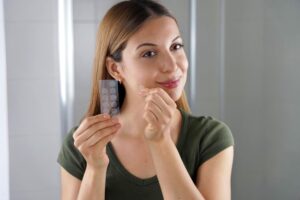
The are four basics that you should keep in mind while popping pimples. Learn the details below!
Know which pimples are safe to pop
While you may be tempted to pop any pimple that shows up, it is not always the best idea. Pimples come in several forms and sizes; some should not be popped.
Generally, it is ok to pop smaller whiteheads. On the other hand, you must not pop red, firm pimples with no head, as they are deeper beneath the skin and can result in hyperpigmentation and scarring.
Avoid popping pimples around the intermedial cheek and nose area to minimize the risk of more severe side effects.
Be gentle
Being gentle while popping a pimple is key! You wouldn’t want your skin to be scarred, resulting in hyperpigmentation later. Therefore, always put gentle pressure when doing the job to pop your pimple safely.
Instead of using your two fingers or nails, you can also use two Q-tips and gently apply pressure until the white pus come out. Avoid putting excessive pressure since you can risk the blood coming out instead.
Keep it clean
Whether you’re using your fingers, nails, or even Q-tips, clean and sanitize them before using them to pop your pimple.
You can simply use rubbing alcohol on the tools and on your skin beforehand. After ensuring everything’s sanitized, you can pop your pesky pimples.
Follow up with proper aftercare
Right after the popping sessions, make sure to follow up with proper aftercare. Simply stick a pimple patch on your popped pimples to block bacteria from getting into your wounded skin.
This small product also does wonders in helping the blemish heal faster and minimizing the chance of hyperpigmentation!
Alternatives to popping a pimple
While popping a pimple can seem like the quickest and easiest solution, there are more effective and safest options. Check out these safer alternative treatments!
Try a spot treatment
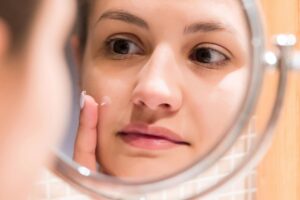
Spot treatments are specifically designed for treating pimples and can provide several benefits that popping cannot.
For starters, spot treatments often contain powerful ingredients such as salicylic acid, benzoyl peroxide, and even retinoids. These are designed to target individual problem areas without damaging the surrounding skin, such as reducing inflammation and discoloration while also preventing further breakouts.
Use a cold or warm compress
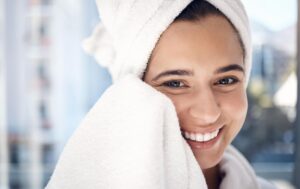
Cold compresses help reduce swelling and redness, while warm water compresses can help soften the skin and open pores to draw out dirt and oil. Applying these compresses several times a day will ultimately reduce the size of the pimple.
This way, you can get rid of the pimples without the pain!
See a professional

Going to your dermatologist is the best way to get your needed help. Instead of using bare-minimum tools, your dermatologist will use sterile and delicate pimple popper instruments to extract blackheads and whiteheads from your skin safely and effectively. This procedure can help clear up your skin in a short period for long-term results.
You can also ask for a suitable skincare regime for your acne afterward to minimize the chance of acne returning soon.
How To Extract a Whitehead
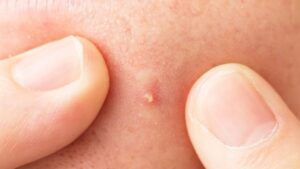
Whiteheads, also known as closed comedones, are blocked pores filled with sebum and bacteria. They are commonly found on the face and can be difficult to extract due to their hard texture.
However, you can learn how to extract whiteheads safely and effectively with the right tools and techniques. Follow these step-by-step guide:
- Before extracting a whitehead, ensure the area around it is clean and dry.
- Find a pair of clean tweezers or an extraction tool, preferably one that’s been sterilized with rubbing alcohol, cotton swabs, and tissue.
- Using your tweezers or extraction tool, lightly press against each side of the whitehead until it pops out. Be gentle so as not to damage your skin.
- When finished extracting, use a tissue or cotton swab to blot away any remaining oil from the area.
- Once you’ve extracted your whitehead, wash the affected area with warm water and mild soap. Once clean, apply an antibacterial cream or gel, such as tea tree oil, or stick a pimple patch to cover the area.
- Finally, keep an eye on the area and watch for any signs of infection, such as redness or swelling — this may be a sign you need medical attention!
How To Extract a Blackhead
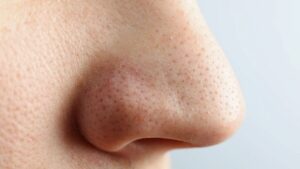
Blackheads are unsightly blemishes that can appear on the nose, chin, and forehead. Home extraction is a popular method of removing blackheads, but it comes with risks. Here’s a guide to safely extracting blackheads at home:
- Cleanse your face with warm water and a gentle cleanser to remove dirt and makeup.
- Apply a clay-based mask or steam your face for 10 minutes to soften the skin.
- Use an extractor tool to gently press down around the blackhead and roll it outward in one fluid motion. Never apply too much pressure, as this could leave scarring or cause further breakouts.
- Once finished, rinse your face with lukewarm water and apply an oil-free moisturizer.
- For stubborn blackheads, use an alcoholic solution on a cotton ball to loosen the sebum plug before attempting extraction again.
Pimples You Should Never Pop
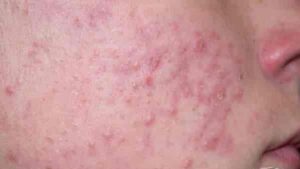
We all know the temptation to pop a pimple and make it disappear, but some pimples should be left alone.
Here are a few you should never touch:
- Cystic acne: This acne penetrates deep into the skin and is often very painful. It’s best to leave this type of acne to a professional who can use gentle methods to reduce it effectively.
- Red pimples with no white head: These pimples are located far beneath the skin; they’re not ready to be popped out yet.
- A large and very painful blemish: These types of pimples might be boils; see a dermatologist to treat them right.
Frequently Asked Questions
Is it better to pop a pimple or leave it?
It can be alluring to pop a pimple, but it is generally not recommended. Popping a pimple can lead to infection and potential scarring. Instead, it’s best to leave the pimple alone and give it time to heal or see a dermatologist for better acne treatment.
What happens if I don’t pop a pimple?
When you decide not to pop a pimple, it will disappear after a few days. Wait until a week maximum, and you’ll notice they’re gone.
Does a pimple go away faster if you pop it?
The answer is no—popping a pimple can actually get in the way of its healing. In fact, popping a pimple can even cause more breakouts because of the bacteria transferred from your fingers to the skin. Instead, be super gentle while popping, opt for safer treatments, or let it disappear.
Conclusion
All in all, popping pimples isn’t a one-size-fits-all process. Finding the right technique for you and your skin type is necessary for a blemish-free complexion. Whether you use an at-home or professional method, it’s important to prioritize safety and hygiene throughout the entire process.
In addition to these techniques, maintaining clean and moisturized skin is essential. Consider incorporating an anti-aging moisturizer into your skincare routine. This type of moisturizer can help hydrate the skin while targeting signs of aging, such as fine lines and wrinkles. Regular exfoliation is also beneficial for preventing clogged pores and keeping those pesky pimples at bay. Embrace these practices, and enjoy the benefits of a clear and glowing complexion!


